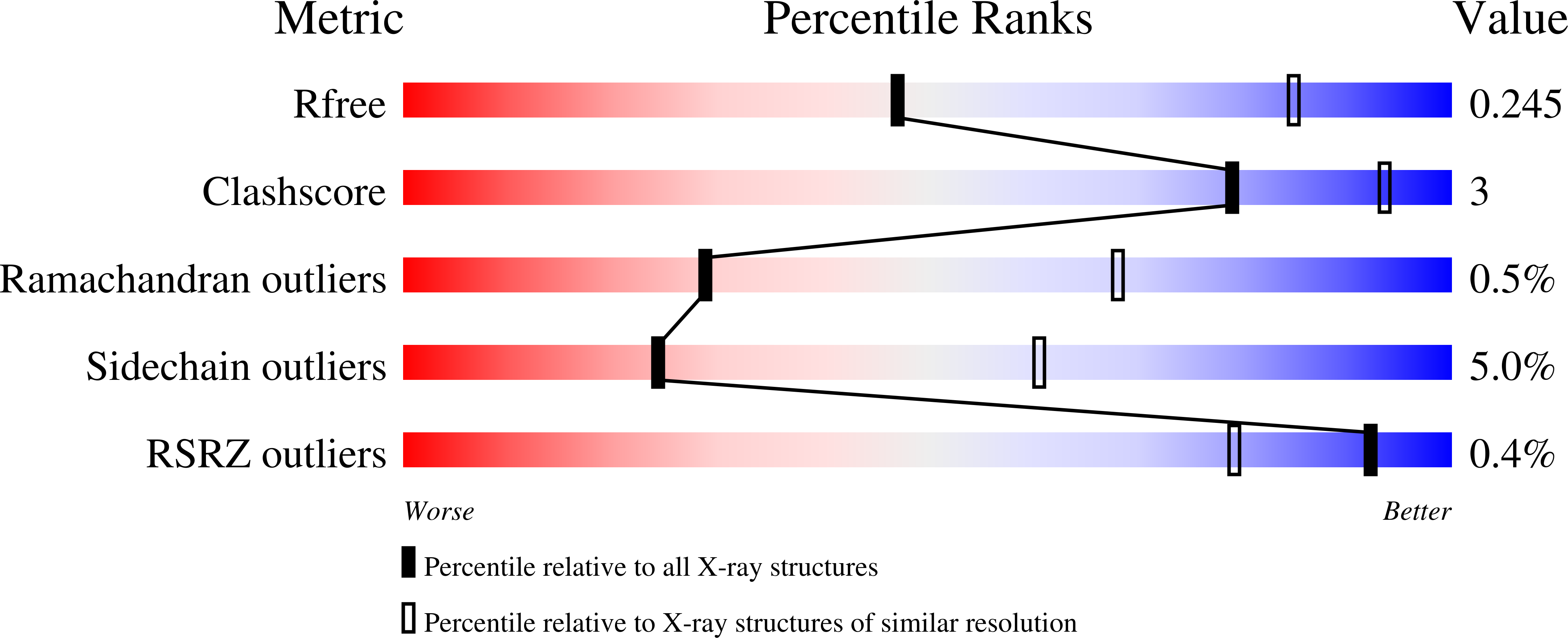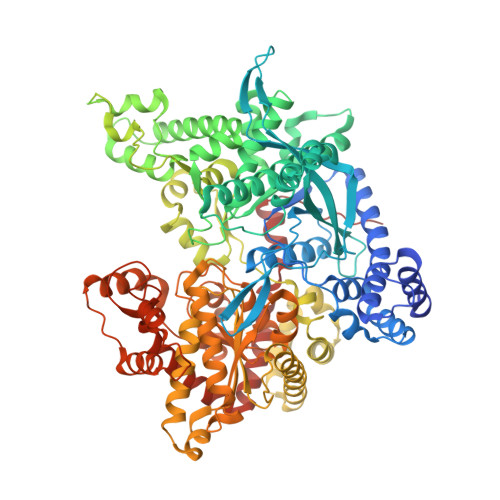Functional and structural characterization of plastidic starch phosphorylase during barley endosperm development.
Cuesta-Seijo, J.A., Ruzanski, C., Krucewicz, K., Meier, S., Hagglund, P., Svensson, B., Palcic, M.M.(2017) PLoS One 12: e0175488-e0175488
- PubMed: 28407006
- DOI: https://doi.org/10.1371/journal.pone.0175488
- Primary Citation of Related Structures:
5LR8, 5LRA, 5LRB - PubMed Abstract:
The production of starch is essential for human nutrition and represents a major metabolic flux in the biosphere. The biosynthesis of starch in storage organs like barley endosperm operates via two main pathways using different substrates: starch synthases use ADP-glucose to produce amylose and amylopectin, the two major components of starch, whereas starch phosphorylase (Pho1) uses glucose-1-phosphate (G1P), a precursor for ADP-glucose production, to produce α-1,4 glucans. The significance of the Pho1 pathway in starch biosynthesis has remained unclear. To elucidate the importance of barley Pho1 (HvPho1) for starch biosynthesis in barley endosperm, we analyzed HvPho1 protein production and enzyme activity levels throughout barley endosperm development and characterized structure-function relationships of HvPho1. The molecular mechanisms underlying the initiation of starch granule biosynthesis, that is, the enzymes and substrates involved in the initial transition from simple sugars to polysaccharides, remain unclear. We found that HvPho1 is present as an active protein at the onset of barley endosperm development. Notably, purified recombinant protein can catalyze the de novo production of α-1,4-glucans using HvPho1 from G1P as the sole substrate. The structural properties of HvPho1 provide insights into the low affinity of HvPho1 for large polysaccharides like starch or amylopectin. Our results suggest that HvPho1 may play a role during the initiation of starch biosynthesis in barley.
Organizational Affiliation:
Carlsberg Research Laboratory, J.C. Jacobsens Gade 4, DK-1799 Copenhagen V, Denmark.


















